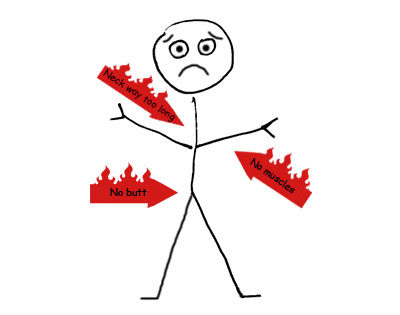
In the academic and professional worlds, you are often confronted with the need to introduce yourself, make a request, or discuss a problem in a business letter. Whether writing a cover letter for a job application, a letter of resignation, a note to a colleague, or other professional communication, you want that letter to clearly put your best foot forward and not draw flaming red arrows to your weaknesses. In today’s post, I’ll offer tips to help you write great business correspondence.

Elements of a Business Letter
A business letter should include certain elements, in the following order from top to bottom with a blank line between each: the sender’s address (that’s yours!), phone number, and email address; the date; the recipient’s name and address; the salutation; optional subject line (“RE: Brief statement of the subject of the letter”), the body of the letter; a closing; and space for your signature above your printed name.
Get a free sample proofread and edit for your English document.
Two professional proofreaders will proofread and edit your English document.
One nit-picky detail to keep an eye out for is how to punctuate the salutation. You were probably taught in school to put a comma after a recipient’s name in a letter. This is correct usage for informal letters. For formal writing, use a colon at the end of the salutation whether it will be printed or sent electronically.
Whenever possible, use the recipient’s actual name and title (“Dear Dr. Smith”) in the salutation. Many people write, “To whom it may concern,” without taking the time to try to figure out exactly who the recipient will be. Often a glance at the website, quick phone call, or email inquiry will turn up the information you need. When a name is not available, be as specific as possible with your salutation. Whatever identifying phrase is used instead of a name should be capitalized as a form of address (“Dear Colleagues”) inclusive (avoid the gendered “Dear Sir/Madam/Sir or Madam”), and be as specific as possible (e.g., Dear Members of the Selection Committee, Personnel Manager).
Here’s a brief checklist to make sure your letter has what it needs:
Tone
All business writing should be formal in tone, even if you’re writing to a friend. You want your recipient to take your letter seriously, so you need to present yourself in a serious manner. Avoid the use of contractions and slang. Make sure to use precise grammar, spelling, and punctuation. (It’s a good idea to use a proofreader here!) Use field-specific terms and expressions accurately, but avoid filling your letter with jargon to make yourself “sound smart.” Expressing yourself concisely and directly is the way to go.
Follow the standard writing rule of introducing the intent of your communication in an introductory paragraph, including as many paragraphs as you need to cover the main points of your communication, and concluding with a final paragraph where you reiterate anything you especially want the recipient to remember or any actions you want the recipient to take.
Formatting
Use standard formatting in all business correspondence: 1” margins; an easy-to-read, standard font such as Times New Roman or Calibri in 11- or 12-point size; and a consistent single space between sentences should all be used.
Letters are typically single-spaced with a blank line between paragraphs and following the sender’s address, date, recipient’s address, optional subject line, and salutation. There are a few common formatting styles for business letters that have to do with placement of the elements of the letter on the lines of text (e.g., centering vs. left alignment, indenting): block, semi-block, and modified block format. Personally, I prefer the simplicity of block formatting, where everything is aligned at the left margin, but to see samples of the other formats, the Purdue Owl is a good resource.
Electronic Correspondence
Some elements of a proper business letter described above are not included in electronic correspondence, specifically your and the recipient’s addresses at the top, the date, and a hand-written signature. You may wish to include your address and other contact information below your name. You may also want to create an electronic version of your signature to include in your email. These elements are not required, however. In an email, the subject is not optional, and should be concise and specific just like if is when included in a printed letter.
Other Resources
Many universities offer resources on their websites for help with letter writing. (A good resource I found recently is from Michigan State’s Career Services office.). Already mentioned above, the trusty Purdue University OWL (Online Writing Lab), has a helpful section on writing basic business letters.
Good luck in whatever endeavors have encouraged you to be considering writing your best business correspondence!
Sarah P.
Get a free sample proofread and edit for your English document.
Two professional proofreaders will proofread and edit your English document.
Get a free sample proofread and edit for your document.
Two professional proofreaders will proofread and edit your document.
We will get your free sample back in three to six hours!